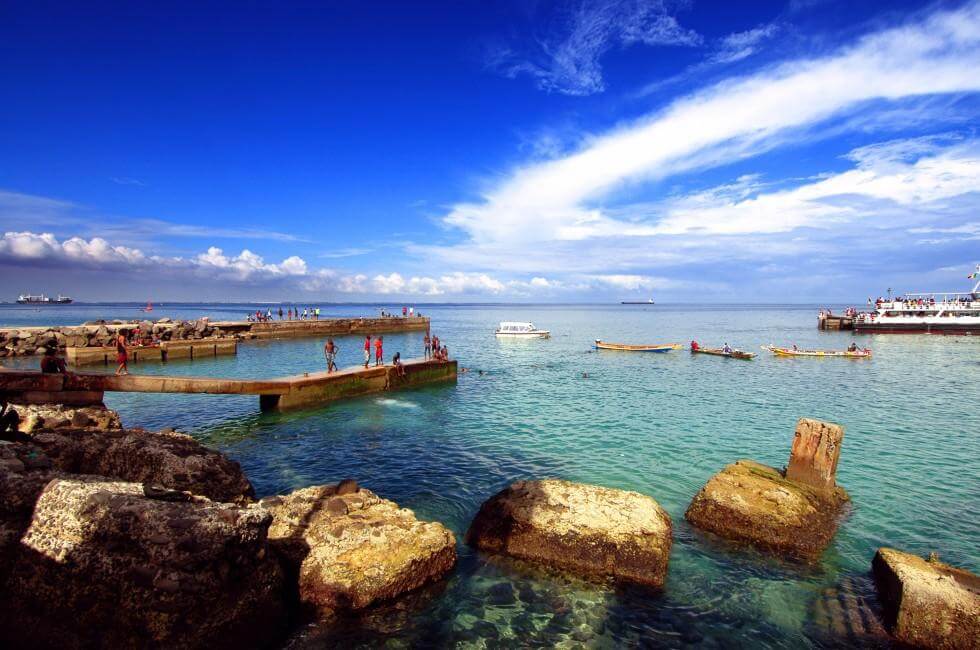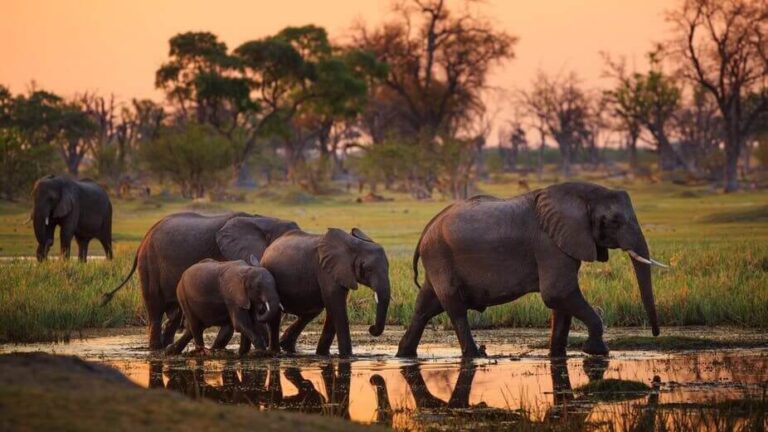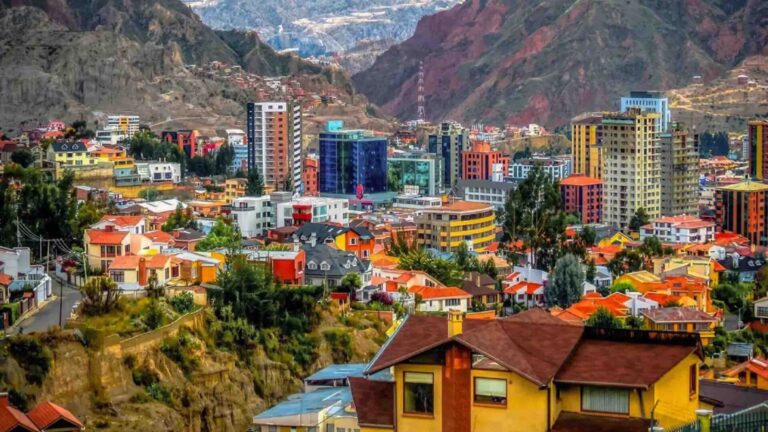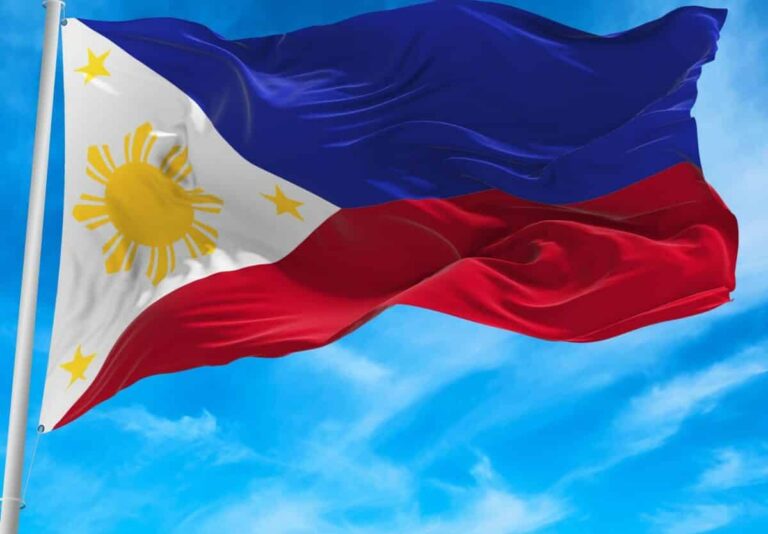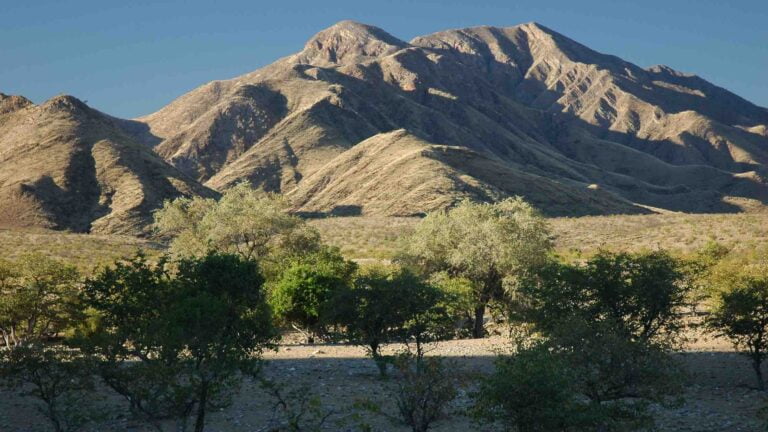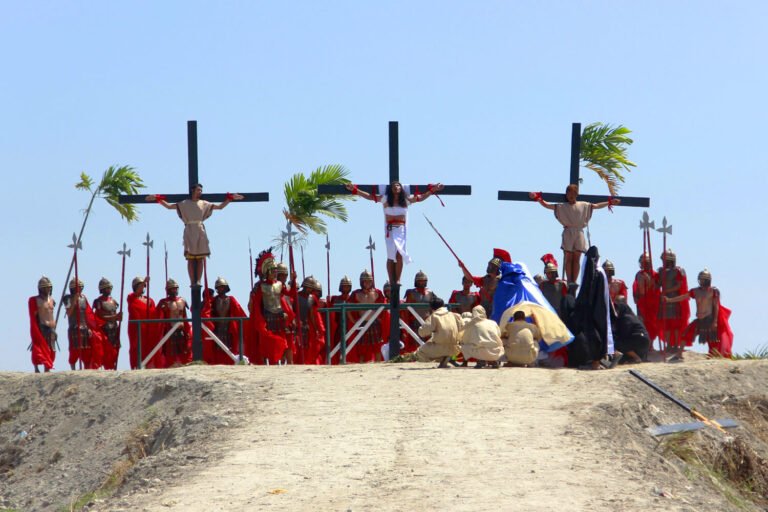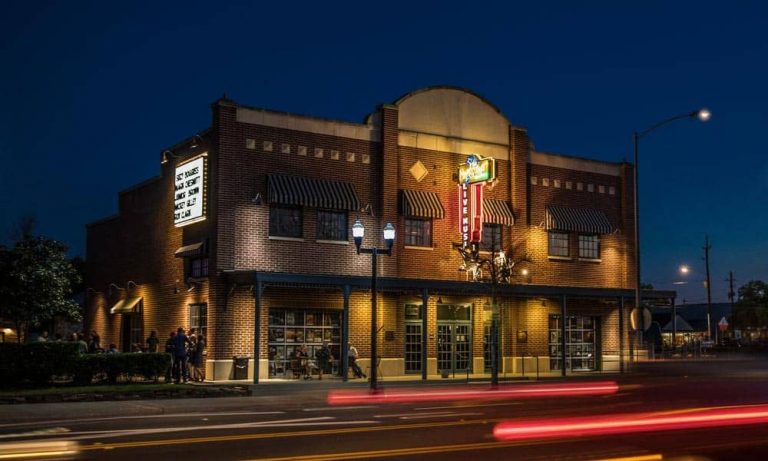Our Top 5 Best Places to Visit in Senegal:
Discovering the Rich Tapestry of Senegal:
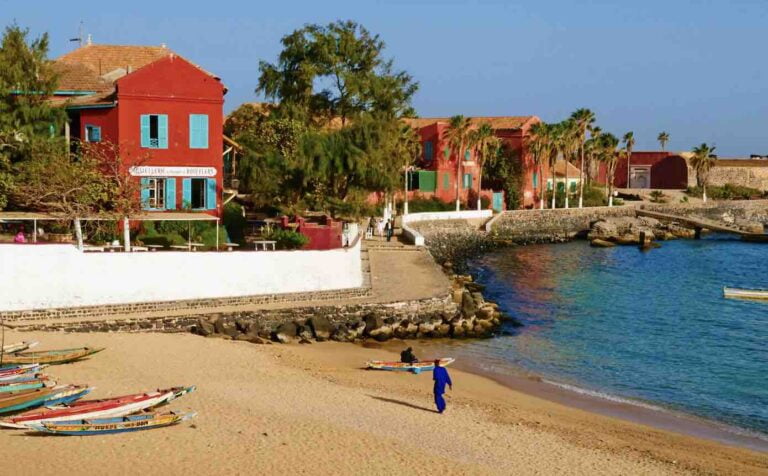
Welcome to the vibrant and diverse country of Senegal, where rich history, captivating landscapes, and warm hospitality come together to create an unforgettable travel experience. From bustling cities to serene beaches and cultural treasures, Senegal offers a range of attractions that will leave you inspired. Let’s embark on a virtual journey through some of the must-visit places in this West African gem:
Map of Senegal and Bordering Countries:
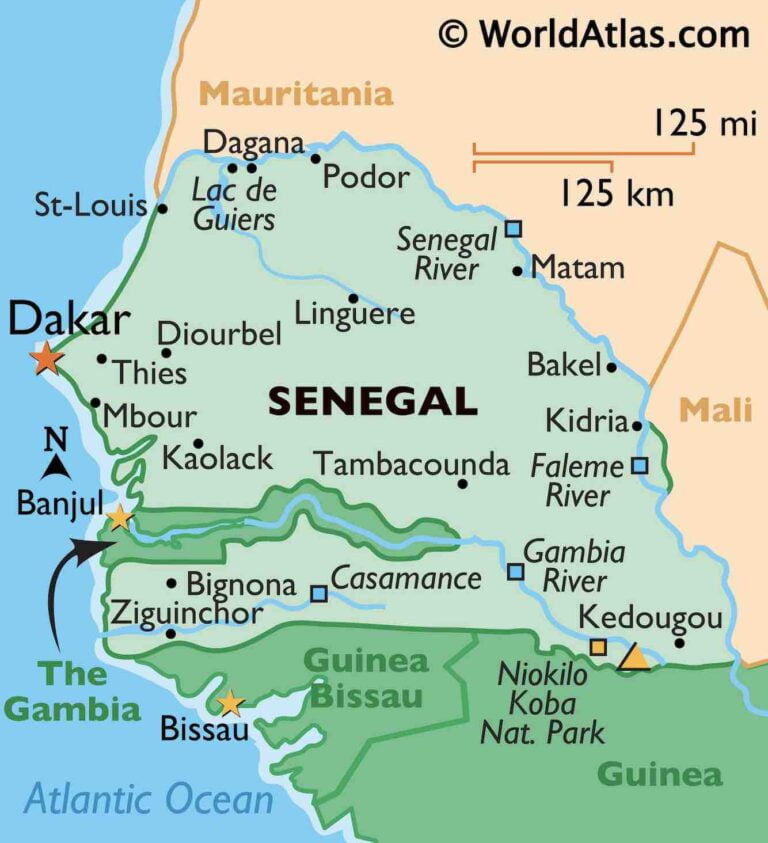
Map Showing Senegal Location in Africa:
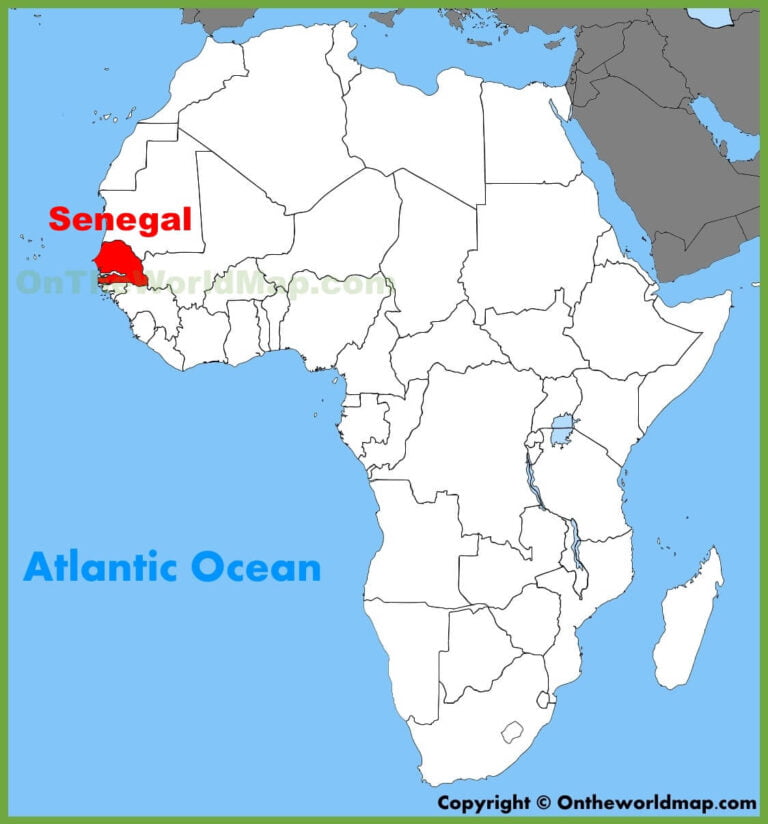
Countries Bordering Senegal:
Senegal is on the coast of West Africa, bordering the North Atlantic Ocean to its west. Senegal is bordered by The Gambia, Guinea, Guinea-Bissau, Mali, and Mauritania, and it shares a maritime borders with Cape Verde.
Our Top 5 Best Places To Visit In Senegal:
1. Dakar: Where City Buzz Meets Beach Chill
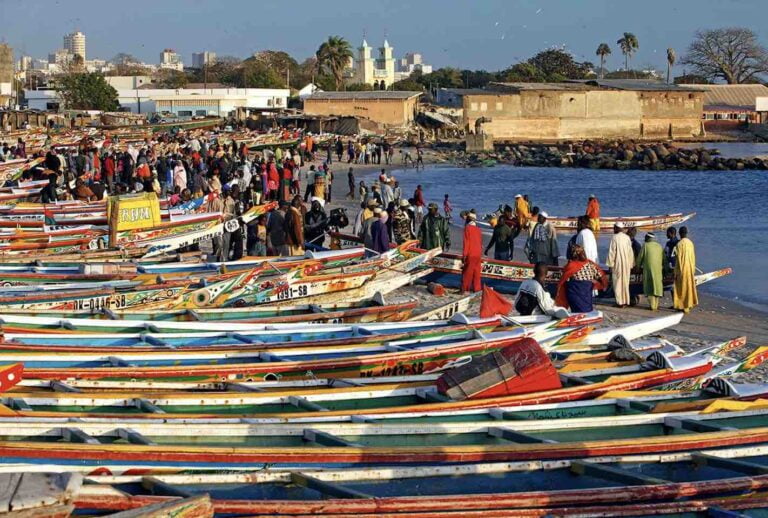
Picture this: I’m in Dakar, the coolest capital ever. Colorful markets, street art that belongs in a museum, and beaches that make you wanna live in your swimsuit. Mornings kicked off with frothy coffee and freshly baked croissants at Café de Rome, where I had front-row seats to Dakar’s bustling morning routine.
Sunset? I’d head to N’gor Beach with friends, sipping on bissap juice (hibiscus tea) and watching the sky put on a mind-blowing color show.
2. Goree Island: A Heartfelt History Lesson
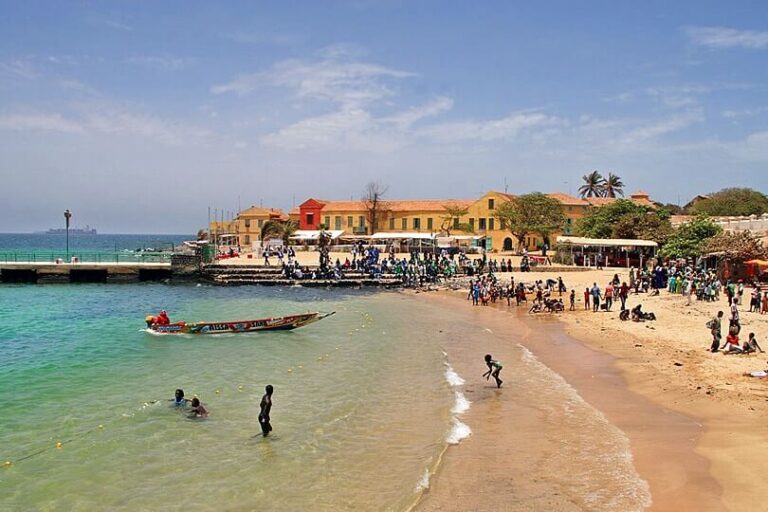
A quick ferry ride and I’m on Goree Island. But lemme tell you, this place ain’t just charming—it’s got stories to share. The House of Slaves was heavy but important. And the Door of No Return? A reminder of history that’ll make you reflect. But Goree isn’t just about the past. The cute cafes and artsy vibes make you feel like you’re in a movie.
3. Pink Lake (Lac Retba): Living in a Dream
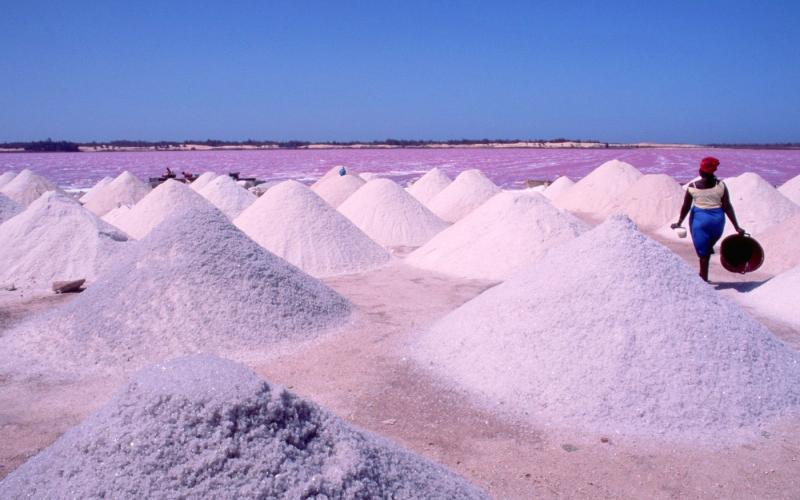
Next stop, the Pink Lake. Yeah, you heard right—pink! Sunrise over the lake was like a cotton candy explosion.
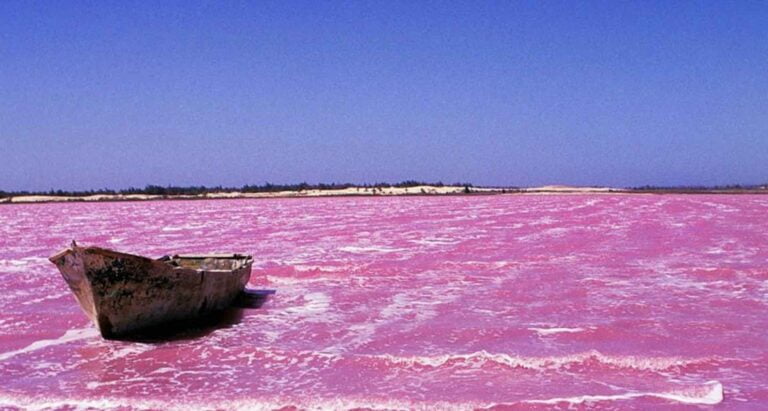
I took a dip (or more like a float) in the salty waters that keep you buoyant. But the real gem? The salt collectors. These folks put in serious work, and I got to join them for a bit. It’s like a workout and a science experiment all in one.
4. Saint-Louis: Vintage Vibes and Cool Streets
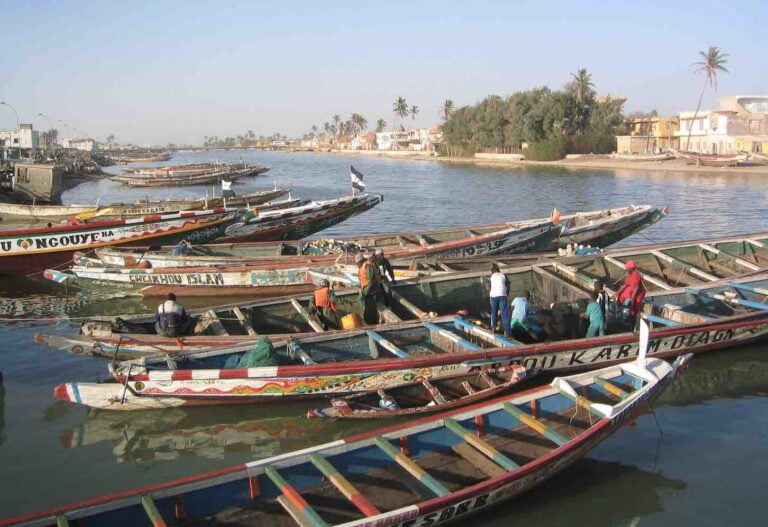
Saint-Louis, you stole my heart. This city has this magical blend of old-world vibes and a modern soul. The Faidherbe Bridge was like a snapshot from another time. I even hopped on a horse-drawn carriage—felt like I was in a period movie! But modern cool isn’t far behind. Nighttime meant hanging out at reggae bars and dancing like nobody’s watching.
5. Djoudj National Bird Sanctuary: Winged Wonders Galore
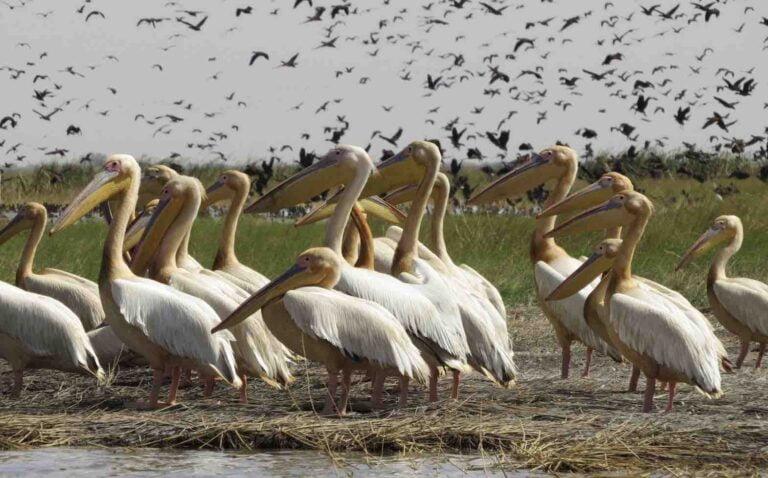
Bird lovers, this one’s for you! Djoudj is like a bird paradise. Pelicans, flamingos, and more birds than you can imagine. Sunrise boat rides meant front-row seats to the bird ballet. And let me tell you, the soundtrack? Pure magic. I felt like I was in a Disney movie—just waiting for a bird to break into song.
Did we mention the food? EAT!
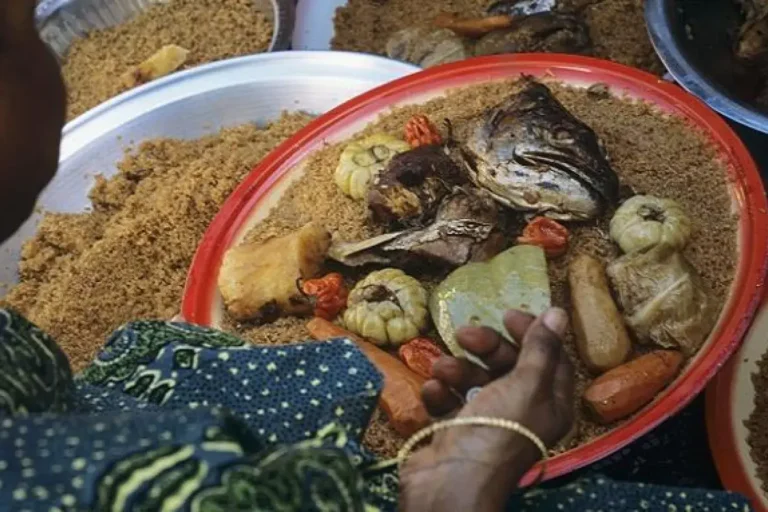
Senegal is a culinary paradise for travelers seeking a taste of West African cuisine. With its rich and diverse culinary traditions, Senegal offers a vibrant tapestry of flavors that captivate the senses.
One cannot visit this beautiful country without savoring its iconic dish, Thieboudienne. Often hailed as Senegal’s national dish, Thieboudienne is a sumptuous rice and fish stew, simmered in a flavorful tomato sauce and garnished with an array of vegetables like carrots, eggplant, and okra. The blend of spices, including garlic, ginger, and Scotch bonnet peppers, imparts a delightful kick to the dish.
Street food enthusiasts will also delight in Senegal’s bustling markets, where they can sample delights like fataya, savory pastries filled with seasoned meat or fish, and the beloved mafé, a rich peanut sauce served with tender chunks of meat. Senegal’s cuisine is a true reflection of its culture and history, offering a delectable journey for any traveler’s palate.

Essential Things to Know Before Traveling to Senegal:
Before traveling to Senegal, it’s important to be well-prepared to ensure a safe and enjoyable visit. Here are some essential things to know:
- Visa and Passport Requirements: Check the visa requirements for your nationality before traveling to Senegal. Ensure that your passport is valid for at least six months beyond your planned departure date.
- Vaccinations and Health Precautions: Senegal may require certain vaccinations, such as yellow fever, and it’s advisable to consult a travel clinic or your healthcare provider for up-to-date information and recommendations.
- Currency: The currency used in Senegal is the West African CFA franc (XOF). It’s a good idea to carry some local currency, as credit cards may not be accepted everywhere.
- Language: The official language is French, but Wolof is widely spoken and understood. Learning a few basic Wolof phrases can be helpful and appreciated by the locals.
- Safety: Senegal is relatively safe for travelers, but like any destination, exercise common-sense precautions. Keep an eye on your belongings, avoid displaying expensive items, and be cautious in crowded places.
- Local Customs and Etiquette: Senegalese people are generally friendly and welcoming. Respect local customs and traditions, dress modestly, and ask for permission before taking photos of people.
- Currency Exchange: Banks and exchange offices are available in major cities. Ensure you have enough local currency for smaller towns and rural areas where ATMs may be scarce.
- Transportation: Senegal has a reasonably developed transportation system, with options like taxis, minibusses (called “car rapide”), and ferries. Negotiate taxi fares in advance or ask drivers to use the meter.
- Accommodation: Senegal offers a range of accommodations, from budget hostels to luxury hotels. Book your accommodation in advance, especially during the peak tourist season.
- Food and Water: Senegal boasts a diverse culinary scene, but be cautious about street food and tap water. Stick to bottled water and eat at reputable restaurants and stalls to avoid foodborne illnesses.
- Electricity: Senegal uses European-style two-pin plugs, so you may need a plug adapter if your devices have different types of plugs.
- Internet and Communication: Internet access is widely available in urban areas, but it can be slower in rural regions. You can purchase local SIM cards for mobile data.
- Transportation Within the Country: If you plan to travel between cities or regions, consider using domestic flights or long-distance buses, depending on your budget and time constraints.
- Local Culture: Senegal is known for its vibrant culture, music, and dance. Be open to experiencing local performances and festivals, which can provide unique insights into the country’s traditions.
- Wildlife and Nature: Senegal offers opportunities for birdwatching and wildlife safaris, particularly in national parks like Niokolo-Koba. Research in advance to make the most of your nature experiences.
By taking these essential factors into account, you can better prepare for your trip to Senegal and make the most of your adventure in this beautiful West African country.
How to Get to Senegal:
Getting to Senegal is relatively straightforward, and the main gateway is through its capital city, Dakar. Here are the primary ways to get to Senegal:
1. By Air:
– **Leopold Sedar Senghor International Airport (DKR)** in Dakar is the main international airport serving Senegal. It has direct flights from major cities around the world. You can find airlines that offer flights to DKR from Europe, North America, and other African countries.
– Some major airlines that frequently fly to Senegal include Air France, Brussels Airlines, Turkish Airlines, Emirates, and Senegal’s national carrier, Air Senegal.
2. By Sea:
– Dakar is a significant port city with a well-established ferry system. You can take ferries from nearby countries, such as the Cape Verde Islands and The Gambia.
– Cruise ships also make occasional stops in Dakar as part of their West African itineraries.
3. Overland Travel:
– If you are in neighboring West African countries, you can travel to Senegal by road. Check visa requirements and road conditions for the specific border crossings you plan to use.
4. Visa Requirements:
– Depending on your nationality, you may need a visa to enter Senegal. Check the visa requirements well in advance of your trip and ensure you have all the necessary documents.
5. Local Transportation:
– After arriving in Dakar, you can use taxis or airport shuttles to reach your accommodation. Be sure to agree on a fare with taxi drivers before starting your journey.
6. Domestic Flights:
– If you plan to explore other regions of Senegal, you can use domestic flights to reach destinations like Ziguinchor in the Casamance region or Saint-Louis in the north.
Always check with airlines, travel agencies, and official government sources for the most up-to-date information on flights, visas, and any travel advisories. Senegal is a welcoming destination with much to offer, from its vibrant culture to its stunning natural beauty, so make sure to plan your trip well and enjoy your visit.
How to Get Around Senegal:
Getting around Senegal is relatively straightforward, and there are various transportation options available to explore this diverse West African country. Here are some ways to get around Senegal:
- Taxis: Taxis are a common mode of transportation in Senegal, especially in cities like Dakar. Taxis can be hailed on the street or booked in advance. Make sure to negotiate the fare before starting your journey, as taxis often don’t use meters.
- Car Rentals: Renting a car is an option for those who prefer more independence and flexibility in their travels. Many international car rental companies operate in Senegal, and you can also find local rental agencies. Be prepared for different driving conditions and road rules.
- Local Buses: In cities like Dakar, there is a network of local buses that can take you around town. These buses are known as “car rapide.” They are colorful minibusses that serve various routes within the city.
- Inter-City Buses: For traveling between cities and regions, you can use inter-city buses. These buses are a budget-friendly option and can take you to destinations across the country. Companies like Dakar Dem Dikk and ABC Transport offer inter-city bus services.
- Domestic Flights: For longer distances within Senegal, consider taking domestic flights. Air Senegal and other regional airlines operate flights to major cities like Ziguinchor, Saint-Louis, and Tambacounda.
- Bush Taxis: Bush taxis, often referred to as “sept-places,” are shared taxis that operate on set routes. They can be a cost-effective way to travel between towns and regions. Keep in mind that these vehicles can be crowded, and the journey may take longer due to frequent stops.
- Ferries: If you want to visit the Gorée Island or travel to other coastal destinations, ferries are available. The Dakar-Gorée ferry is a popular choice for tourists.
- Motorcycle Taxis: In some areas, especially in smaller towns and villages, you may find motorcycle taxis, known as “motos-taxis” or “Jakartas.” These can be a convenient way to navigate through narrower streets.
- Walking and Cycling: In cities and towns, walking and cycling are excellent ways to explore local neighborhoods and attractions. Senegal has a pleasant climate for outdoor activities.
- Horse-Drawn Carriages: In certain areas, such as Saint-Louis, you may find horse-drawn carriages, which can provide a unique and leisurely mode of transportation.
Before using any mode of transportation, especially in rural areas, it’s a good idea to confirm schedules, availability, and safety considerations. Senegal is generally safe for travelers, but it’s essential to exercise common-sense precautions and plan your journeys carefully to make the most of your time in this culturally rich and diverse country.
FAQ – Our Top 5 Best Places To Visit In Senegal and Traveling to Senegal in General
Traveling to Senegal: Frequently Asked Questions
1. Do I need a visa to visit Senegal?
- Visa requirements vary depending on your nationality. Many travelers require a visa to enter Senegal, while some countries have visa-free access or can obtain visas upon arrival. It’s essential to check the specific requirements for your nationality in advance of your trip.
2. What is the best time to visit Senegal?
- The dry season, from November to April, is considered the best time to visit Senegal, as the weather is pleasant and suitable for outdoor activities. However, the Harmattan winds can bring dust and haze during this period. The rainy season, from May to October, can be hot and humid but offers lush landscapes and fewer tourists.
3. Is Senegal a safe destination for tourists?
- Senegal is generally a safe destination for tourists. However, like any other country, it’s advisable to exercise common-sense precautions. Be cautious with your belongings, avoid displaying expensive items, and be aware of your surroundings. Consult travel advisories and follow local advice regarding safety and security.
4. What vaccinations are required before traveling to Senegal?
- Yellow fever vaccination is mandatory for entry into Senegal. It’s also recommended to be up to date on routine vaccinations like measles, mumps, rubella (MMR), diphtheria, tetanus, and pertussis (DTaP), and hepatitis A and B. Additionally, consult a healthcare provider for advice on malaria prophylaxis and other recommended vaccinations.
5. What is the currency in Senegal, and where can I exchange money?
- The currency used in Senegal is the West African CFA franc (XOF). You can exchange money at banks, exchange offices, or withdraw cash from ATMs in major cities. Credit cards are accepted at larger hotels, restaurants, and shops, but it’s advisable to carry cash for smaller establishments and in rural areas.
6. What languages are spoken in Senegal?
- The official language of Senegal is French, but Wolof is widely spoken and understood, especially in urban areas. English is not as commonly spoken, so it can be helpful to learn some basic French or Wolof phrases to facilitate communication.
7. How do I get around within Senegal?
- Senegal offers various transportation options, including taxis, car rentals, local buses, inter-city buses, domestic flights, and ferries. The choice of transportation depends on your destination and budget. Taxis are common within cities, while inter-city buses or domestic flights are suitable for longer journeys.
8. What should I wear in Senegal?
- Senegal is a predominantly Muslim country, so it’s advisable to dress modestly, especially in rural areas and when visiting religious sites. Lightweight, breathable clothing is suitable due to the warm climate. Don’t forget sunscreen, a hat, and comfortable walking shoes for outdoor exploration.
9. What are the must-visit attractions in Senegal?
- Senegal offers diverse attractions, including Dakar’s vibrant markets and Gorée Island, the cultural richness of Saint-Louis, the natural beauty of Niokolo-Koba National Park, and the historical sites of Tambacounda. The Pink Lake (Lac Rose) and Saloum Delta are also popular destinations.
10. Is tap water safe to drink in Senegal?
- It’s generally not recommended to drink tap water in Senegal. Stick to bottled water, which is widely available. Avoid ice in drinks and be cautious with raw vegetables and fruits that may have been washed with tap water.
Remember to check for any updated travel advisories and requirements before your trip, and consider consulting your country’s embassy or consulate in Senegal for additional information and assistance during your stay.
Best Places To Visit In Senegal: Frequently Asked Questions
Frequently Asked Questions (FAQ) on Best Places to Visit in Senegal
1. What are the must-visit places in Senegal?
- Senegal offers a wide range of attractions, but some must-visit places include Dakar, Gorée Island, Saint-Louis, Niokolo-Koba National Park, Pink Lake (Lac Rose), and the Saloum Delta. Each destination offers unique experiences and cultural richness.
2. What can I see and do in Dakar, Senegal’s capital city?
- In Dakar, explore the bustling markets, such as Marché Sandaga and Marché Kermel. Visit the African Renaissance Monument, Dakar Grand Mosque, and the vibrant African Arts Village (Village des Arts). Don’t miss the historic Gorée Island, accessible by ferry, to learn about the slave trade.
3. What makes Gorée Island a significant attraction?
- Gorée Island, a UNESCO World Heritage Site, is historically significant as a former center of the Atlantic slave trade. Visitors can explore the House of Slaves, museums, and picturesque streets. The island also offers beautiful beaches and a tranquil atmosphere.
4. What are the highlights of Saint-Louis?
- Saint-Louis, a UNESCO World Heritage Site, is known for its colonial architecture, vibrant music scene, and cultural festivals. Explore the old town, take a pirogue ride in the Langue de Barbarie, and enjoy the annual Saint-Louis Jazz Festival.
5. What wildlife experiences can I have in Senegal?
- Niokolo-Koba National Park is a prime destination for wildlife enthusiasts. It’s home to various species, including elephants, lions, hippos, and numerous bird species. Go on a safari or nature walk to experience the park’s diverse ecosystems.
6. What is unique about the Pink Lake (Lac Rose)?
- The Pink Lake, named for its distinctive pinkish hue caused by high salt content and microorganisms, offers a surreal experience. Visitors can float effortlessly in its salty waters due to the high buoyancy. The lake is also a site for salt harvesting.
7. What can I explore in the Saloum Delta region?
- The Saloum Delta is a UNESCO Biosphere Reserve known for its mangroves, birdwatching opportunities, and picturesque villages. Take boat trips through the delta, visit Fadiouth Island with its shellfish mounds, and immerse yourself in local culture.
8. Are there any historical sites in Senegal worth visiting?
- Yes, Senegal is rich in historical sites. In addition to Gorée Island, visit the House of Slaves in Joal-Fadiouth, the Great Mosque of Touba, and the historic city of Toubacouta.
9. Can I explore natural beauty in Senegal?
- Absolutely! Besides Niokolo-Koba and the Pink Lake, you can visit the Bandia Wildlife Reserve, the Lompoul Desert with its striking sand dunes, and the pristine beaches of Cap Skirring in Casamance.
10. How can I explore Senegal’s vibrant music and dance culture?
- Senegal is known for its rich musical heritage. Attend live performances of traditional music genres like Mbalax and Sabar, and explore local dance styles. Don’t miss the opportunity to experience the lively atmosphere of local music festivals and dance events.
11. Is there a best time to visit these attractions in Senegal?
- The dry season, from November to April, is generally the best time to visit Senegal, as the weather is pleasant for outdoor activities. However, it can get crowded during this period. The rainy season, from May to October, offers lush landscapes but can be hot and humid.
These FAQs provide an overview of some of the top places to visit in Senegal. Depending on your interests and the duration of your stay, there are numerous other attractions and experiences to discover in this culturally diverse and beautiful country.
You want more on Places to Visit in Senegal? ⬇️ ⬇️ ⬇️
Our Top 5 Best Places To Visit In Senegal – Final Thoughts:
Senegal’s got everything from history to dreamy landscapes to vibes that’ll make you wanna dance in the streets. From sipping coffee with the locals to immersing in history and marveling at nature’s beauty, this country offers the ultimate thrill ride.
So pack your bags, bring your curiosity, and let Senegal work its magic on you. This adventure is worth every second!
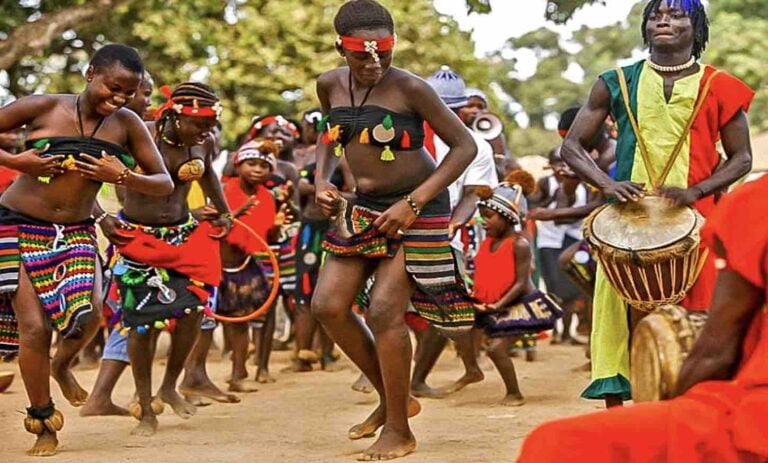
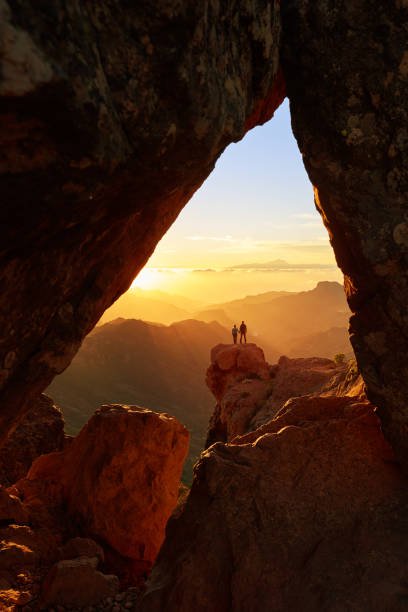
Best Places to Visit in Spain 2023
Spain, a country rich in history, culture, and breathtaking landscapes, beckons travelers with its vibrant cities, stunning beaches, and captivating architecture. From the enchanting streets of Barcelona to the sun-kissed shores of the Costa del Sol, Spain offers a diverse array of destinations to explore..

Europe: A Tapestry of Diversity, Culture and Adventure
Europe, a continent as diverse as it is beautiful, is a traveler’s dream come true. From the snow-capped peaks of the Alps to the sun-kissed beaches of the Mediterranean, Europe offers an enchanting mix of experiences for every type of traveler. Join us as we embark on a journey through the heart of Europe, discovering…

Our Top 5 Best Places to Visit in Kuwait
Discovering Kuwait: Journey Through its Hidden Treasures Hey fellow wanderlusters, let’s dive into Kuwait’s kaleidoscope of culture, where the past meets modernity. I’ve uncovered five must-visit spots for the young and adventurous traveler. From sipping on sweet tea under Bedouin tents to catching epic sunsets, Kuwait is an adventure waiting to happen. Map of Kuwait…

Our Top 5 Best Places to Visit in Dominica
Dominica: Where Adventure Meets Paradise Welcome to Dominica, the “Nature Island” of the Caribbean. If you’re seeking a destination that’s off the beaten path, brimming with natural wonders and adventure, you’ve found it. Here, you’ll explore lush rainforests, soak in rejuvenating hot springs, and dive into sparkling turquoise waters. Let’s embark on a journey to…
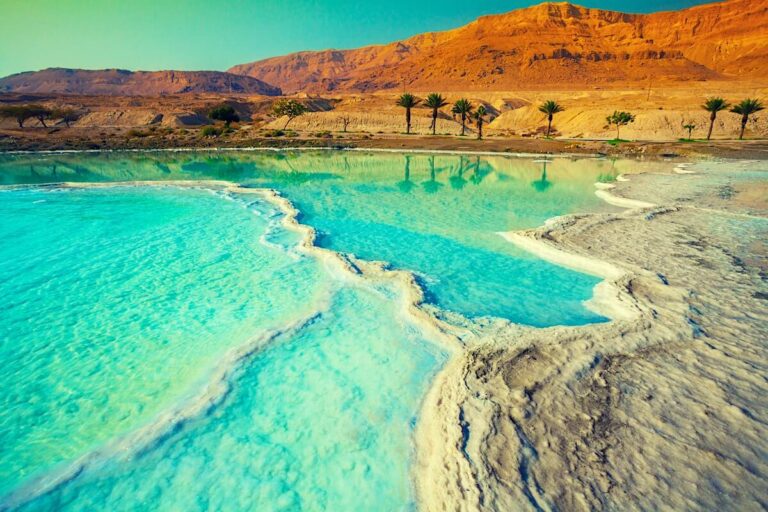
Our Top 5 Best Places to Visit in Jordan
My Journey Through Jordan’s Top 5 Destinations If you’re ready to dive into a world of ancient wonders, surreal landscapes, and incredible experiences, then Jordan is calling your name. Let me take you on a ride through my unforgettable journey as I uncovered the 5 best places to visit in this captivating country. Map of…

Our Top 5 Best Places to Visit in Lebanon
Lebanon Unveiled: Exploring the Mystique of the Middle East Welcome to the captivating land of Lebanon! Nestled along the Mediterranean Sea, this enchanting country is a treasure trove of history, culture, and natural beauty. Let’s embark on a journey to discover some of the most mesmerizing places that Lebanon has to offer. Map of Lebanon…
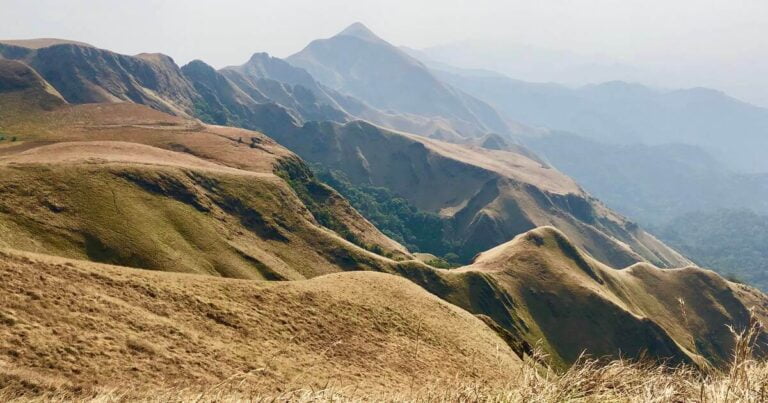
Our Top 5 Best Places to Visit in Guinea
Unveiling Guinea’s Hidden Treasures: 5 Must-Visit Places Are you ready for an off-the-beaten-path adventure in West Africa? Guinea, a hidden gem nestled between Guinea-Bissau, Senegal, Mali, Cote d’Ivoire, Liberia, and Sierra Leone, awaits your discovery. Prepare to be captivated by its vibrant culture, stunning landscapes, and welcoming people as we explore some of the must-visit…
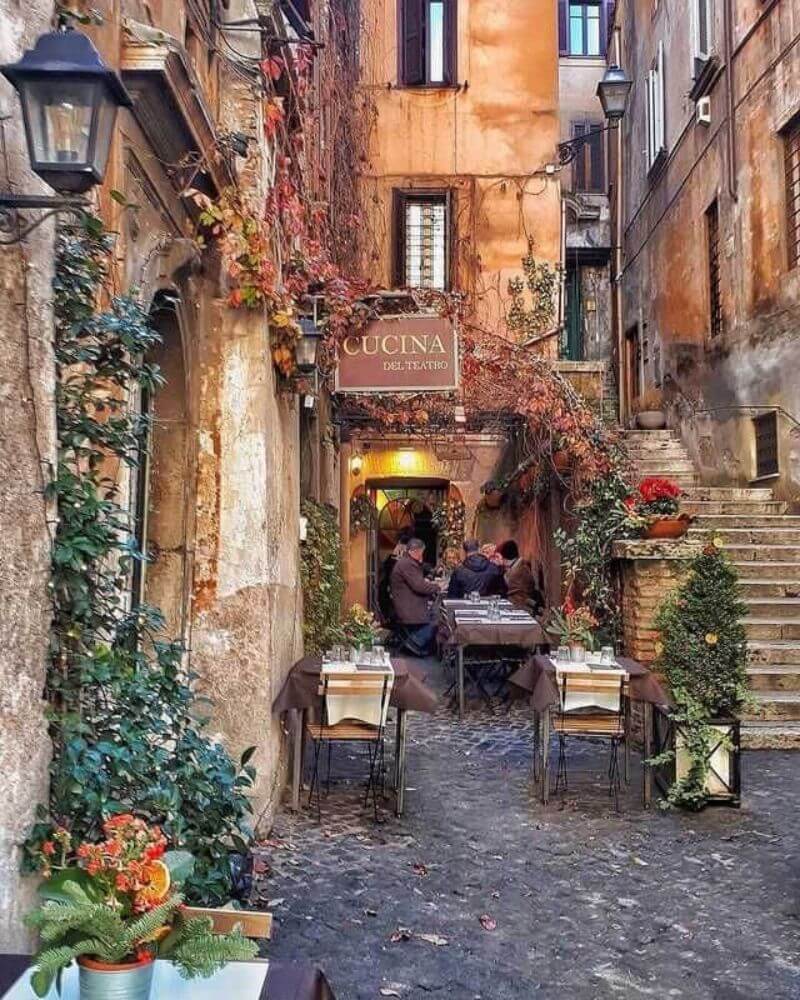
Best Places to Visit in Italy 2023
Italy, a land of romance, rich history, and breathtaking landscapes, beckons travelers with its magnetic allure. From the captivating cities adorned with timeless architecture to the picturesque coastal towns and rolling vineyards, this Mediterranean gem offers a plethora of unforgettable experiences..
Exploring Greece’s Timeless Treasures: Greece Best Places to Visit Top 10
Exploring Italy’s Treasures: The Best Places to Visit in Italy in 2023
Our 10 Best Places to Visit in Venice: Come Explore the Enchanting Floating City
Unveiling the Enchanting Beauty: Our Best Places to Visit in Florence
Our Best Free Places to Visit in New York That are yes, Absolutely FREE!
Our Best 10 Affordable Vacation Destinations if you are on a tight budget.
Our 10 Best Budget Travel Tips: Explore the World Without Draining Your Bank Account.
These are our Top 10 Best Travel Destinations Worldwide 2023
Our Absolute Best list of 10 Less Touristy Places to Travel in Europe 2023
Australia: A Traveler’s Paradise: Best Australian Destinations 2023
Our Top 5 Best Places To Visit In Senegal – By David John
5 Best Places To Visit In Senegal: Cover Image by fc
Best Places To Visit In Senegal: flickr images licensed under CC BY 2.0
Additional images: adobe · colourbox · istock · pexels · shutterstock · unsplash unless otherwise stated.
Were our Top 5 Best Places To Visit In Senegal: helpful to you?
Let us know your thoughts in the comments below..
And if you are looking for a specific piece of information, please do comment below..
